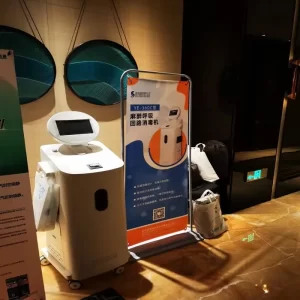The Role of Anesthesia Machine in Modern Healthcare

We know that we only thrive if we can guarantee our combined price tag competiveness and top quality advantageous at the same time for anesthesia machine.
Introduction:
Anesthesia plays a crucial role in modern healthcare, ensuring patient comfort and safety during surgeries and medical procedures. Behind the scenes, the anesthesia machine is a vital tool that supports anesthesia providers in delivering precise and effective anesthesia. In this article, we will delve into the world of anesthesia machines, exploring their components, functionalities, and the advancements that have revolutionized patient care.
1. Understanding the Anesthesia Machine:
The anesthesia machine, also known as an anesthetic workstation, is a complex apparatus that administers anesthesia gases and regulates the patient's respiratory functions during surgery. It consists of several interconnected components, including a gas delivery system, breathing circuits, vaporizers, monitors, and alarms.
2. Ensuring Patient Safety:
One of the primary responsibilities of an anesthesia machine is to ensure patient safety throughout the anesthetic process. It achieves this by delivering precise concentrations of anesthetic gases, maintaining the patient's breathing, and monitoring various vital signs such as oxygen saturation and end-tidal carbon dioxide levels. These machines are equipped with safety features, including alarms that alert providers to any deviations from the desired parameters.
3. Components of an Anesthesia Machine:
a. Gas Delivery System: The gas delivery system consists of high-pressure cylinders containing anesthetic gases, pressure regulators, and flow meters. It provides a controlled flow of gases to the patient, adjusted according to the anesthesia provider's requirements.
b. Breathing Circuits: These circuits connect the patient to the anesthesia machine and allow for the exchange of oxygen and anesthetic gases. Different types of circuits, such as circle circuits and non-rebreathing circuits, are chosen based on the specific needs of the patient and the procedure.
With our rules of " small business standing, partner trust and mutual benefit", welcome all of you to definitely do the job alongside one another , grow together.
c. Vaporizers: Vaporizers convert liquid anesthetics into vapor form and deliver them to the patient. They ensure a consistent concentration of anesthetic gases and play a critical role in the precision of anesthesia administration.
d. Monitors and Alarms: Anesthesia machines are equipped with monitors for continuously assessing and recording vital signs, such as heart rate, blood pressure, and oxygen levels. Alarms alert the anesthesia provider to any potential issues or deviations from the desired parameters.
4. Advancements in Anesthesia Machines:
Over the years, anesthesia machines have undergone significant advancements to enhance patient care. Some notable advancements include:
a. Integration with Electronic Medical Record (EMR) systems: Anesthesia machines can now seamlessly connect with EMR systems, enabling real-time data transfer and improving documentation accuracy.
b. Advanced monitoring capabilities: Modern anesthesia machines are equipped with advanced monitoring technologies, such as capnography, which measures end-tidal carbon dioxide levels, providing critical information about the patient's ventilation.
c. Automated drug delivery: Some anesthesia machines now have integrated drug administration systems, delivering precise dosages of medications automatically, reducing the risk of human error.
d. Enhanced user interfaces: User-friendly interfaces and touchscreen displays make it easier for anesthesia providers to navigate and control the machine during surgeries, saving time and improving workflow.
Conclusion:
The anesthesia machine is an indispensable tool in modern healthcare, ensuring patient safety and comfort during surgeries and medical procedures. Through its various components and functionalities, it enables anesthesia providers to deliver precise anesthesia and monitor vital signs. As technology continues to advance, anesthesia machines will evolve further, providing even better patient care and enhancing the overall surgical experience.
If you are for any reason unsure which product to select, do not hesitate to contact us and we are going to be delighted to advise and assist you. This way we are going to be providing you with all the knowledge needed to make the best choice. Our company strictly follows "Survive by good quality, Develop by keeping good credit. " operation policy. Welcome all the clients old and new to visit our company and talk about the business. We have been looking for more and more customers to create the glorious future.